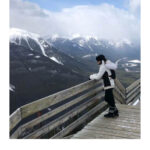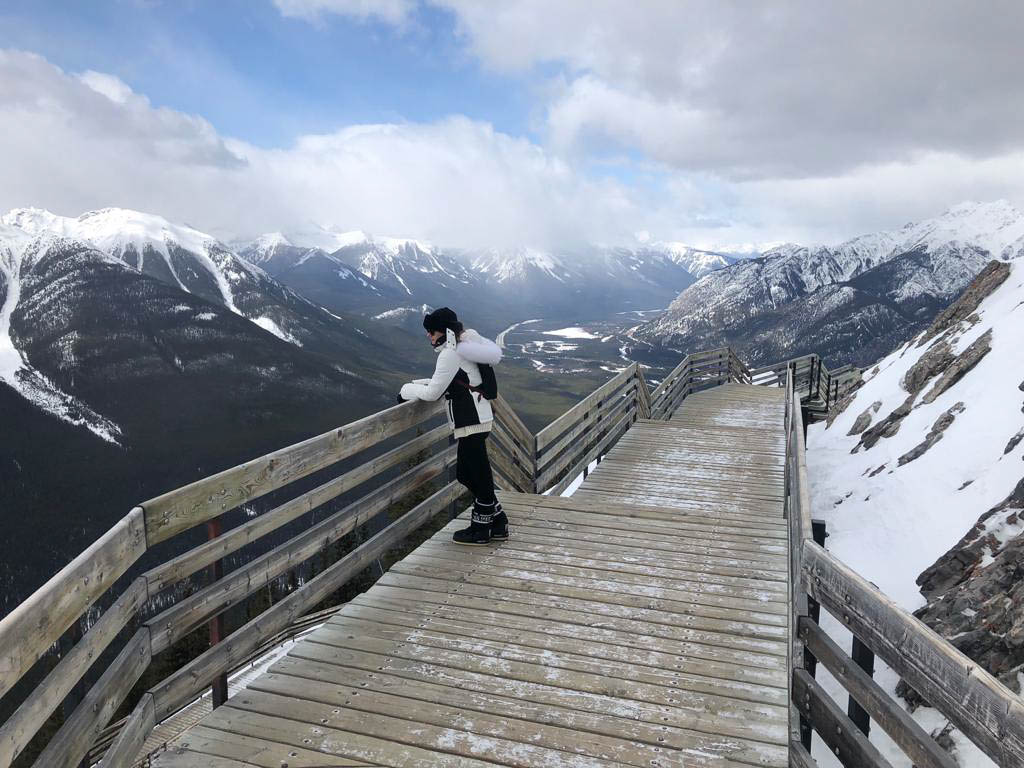
For our trip to Banff National Park, Alberta, in late March, my friends and I put together a great itinerary that involved all the best experiences that Canadian wintertime can offer. We planned many cool winter activities, a visit to Lake Louise, skiing in the Canadian Rockies and relaxing in Banff town. So, we knew more or less what we would be doing. However, I was still unsure as to what I should pack! This was my first visit to Canada. Also, the only trips to the mountains (or any type of cold climate) I had taken before were ski trips to the Alps. Sounds similar, but it’s not really.
If you are planning a trip to the Canadian Rockies anytime between November to April, you are in the right place. Following our return from a very successful trip, I’ll answer all of your packing related questions and let you know what are the essential items for your Banff winter packing list.
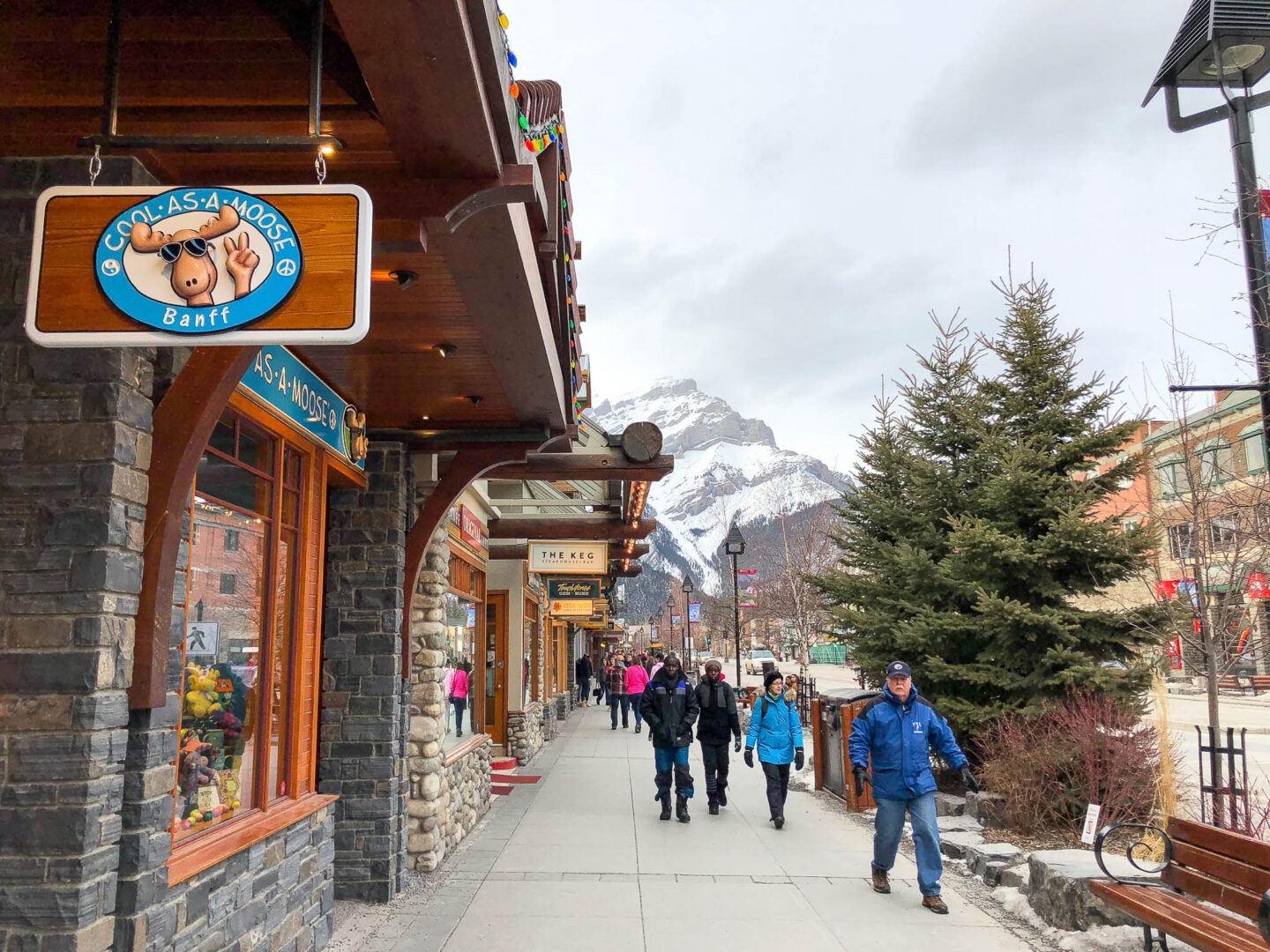
WHAT TO EXPECT & WHAT TO PACK FOR A WINTER / EARLY SPRING TRIP TO BANFF
While packing for my trip to Banff, I had so many questions. How cold will it be? How much time will I spend outdoors? Will there be ice / snow on the pavements? Do people wear snow boots to have dinner in a nice restaurant? Here’s what to expect on a winter / early spring trip to Banff and how to adjust your packing list accordingly.
PACKING FOR BANFF: STAYING WARM & DRY
How cold is Banff in winter / early spring?
Cold weather and snowy conditions last for many months in Banff! As a rule of thumb, unless you are travelling in the summer, it’s worth being prepared for low / very low temperatures and some / a lot of snow. Also, if you are skiing or spending time in the mountains, don’t forget that temperature drops as altitude increases. It is said that temperature decreases by about 1°C per 100m height gain (or 3°F for every 1,000ft).
BANFF WEATHER FROM LATE AUTUMN TO EARLY SPRING (AKA CANADIAN WINTER)
November – December
The first large snowfalls usually occur in November when the temperatures hover around 0°C / 32°F. The lakes begin to freeze and the road to iconic Moraine Lake closes for the winter. Each week, temperatures progressively drop.
January – March
Winters are very cold and dry, but it can get unexpectedly warmer when the Chinook winds blow. The mountains receive large amounts of snow, a moderate amount in the town of Banff. January is the coldest month, with lows of -15°C / 5°F, though temperatures can drop to -30°C / -22°F. Heading into March, temperatures start to increase, but Banff in March continues to be a winter wonderland.
April
Not the stereotypical springtime since a good amount of snow is on the ground. Ski resorts are open, Lake Louise is still frozen and most trails continue to be closed. Temperatures fluctuate around 10°C / 50°F though freezing temperatures are still the norm at night.
Check the current weather in Banff
How much time will I spend outdoors?
Most activities and sights in Banff National Park involve a significant amount of time spent outdoors. Make sure to check out my Banff winter bucket list for ideas for your itinerary! Whether you are hiking in Johnston Canyon, dogsledding, iceskating on Lake Louise or just strolling around Banff town, it’s worth remembering that ‘there is no bad weather only bad clothing’.
As a rule of thumb, layering and weather resistant materials are the two most important things to consider when packing for your trip to Banff.
BANFF WINTER PACKING ESSENTIAL No 1:
A well insulated & weather resistant jacket
This is a must if you are travelling to Banff anytime between November and April. If you are planning to ski the Canadian Rockies, your ski jacket probably fits the bill. Make sure that you are happy with its insulation properties when you are not being active.
Not a skier? Coming from a warmer climate? If you are unfamiliar with modern winter jacket technology, it’s worth doing a little research! Your first port of call when looking for a winter jacket that’s suitable for both the city and the outdoors should be your local mountain gear store. Brands such as Canada Goose, The North Face and Arcteryx are also worth checking out (for reference and / or to buy). The main things to look out for is the jacket’s insulation, water resistance, design details and fit.
There is quite a bit of technology and design that goes into a jacket that is meant for low temperatures and precipitation. As a result, a good quality winter jacket can set you off by a considerable amount of money. If you are struggling to justify the expense, don’t fret. Branding can also contribute to steep pricing. Check out stores such as Uniqlo, Superdry and Oysho as well as the summer and Black Friday sales for bargains!
BANFF WINTER PACKING ESSENTIAL No 2:
A pair of warm trousers, weather resistant if possible
It is shocking how few winter appropriate pairs of trousers exist in everyday clothing retailers! I live in London, yet I have a hard time finding anything other than jeans or thin cotton blend trousers which are only appropriate for temperatures above 10-15°C / 50-59°F. Is it just me or are you having a similar problem?
Warm trousers are essential for travelling in Canada in winter (especially for women or anyone who feels the cold easily) in order to avoid wearing thermal leggings underneath, because who wants to do that?
While any pair of trousers made out of a thick material (such as cord or heavy cotton) could work, it’s worth having a look at technical trousers. They typically feature a fleece or brushed cotton feel lining and have basic water resistance. My fiancé enjoys the AT Pant and the Diversion Pant from Western Rise as well as The Coolerdays, The Cords and The Flannels from Mr Marvis. For women, I’d recommend the Thermal Skinny Outdoor Trousers from Acai. I discovered them after my Canada trip but I now wear them when the weather in London is cold, drizzly and miserable and for après ski in the Alps!
BANFF WINTER PACKING ESSENTIAL No 3:
Winter accessories & a weather resistant daypack
A beanie, gloves, neck warmer and sunglasses are a must when travelling to Banff in winter / early spring. A weather resistant daypack can free up your pockets and help you carry extra layers, suncream, a reusable water bottle and snacks!
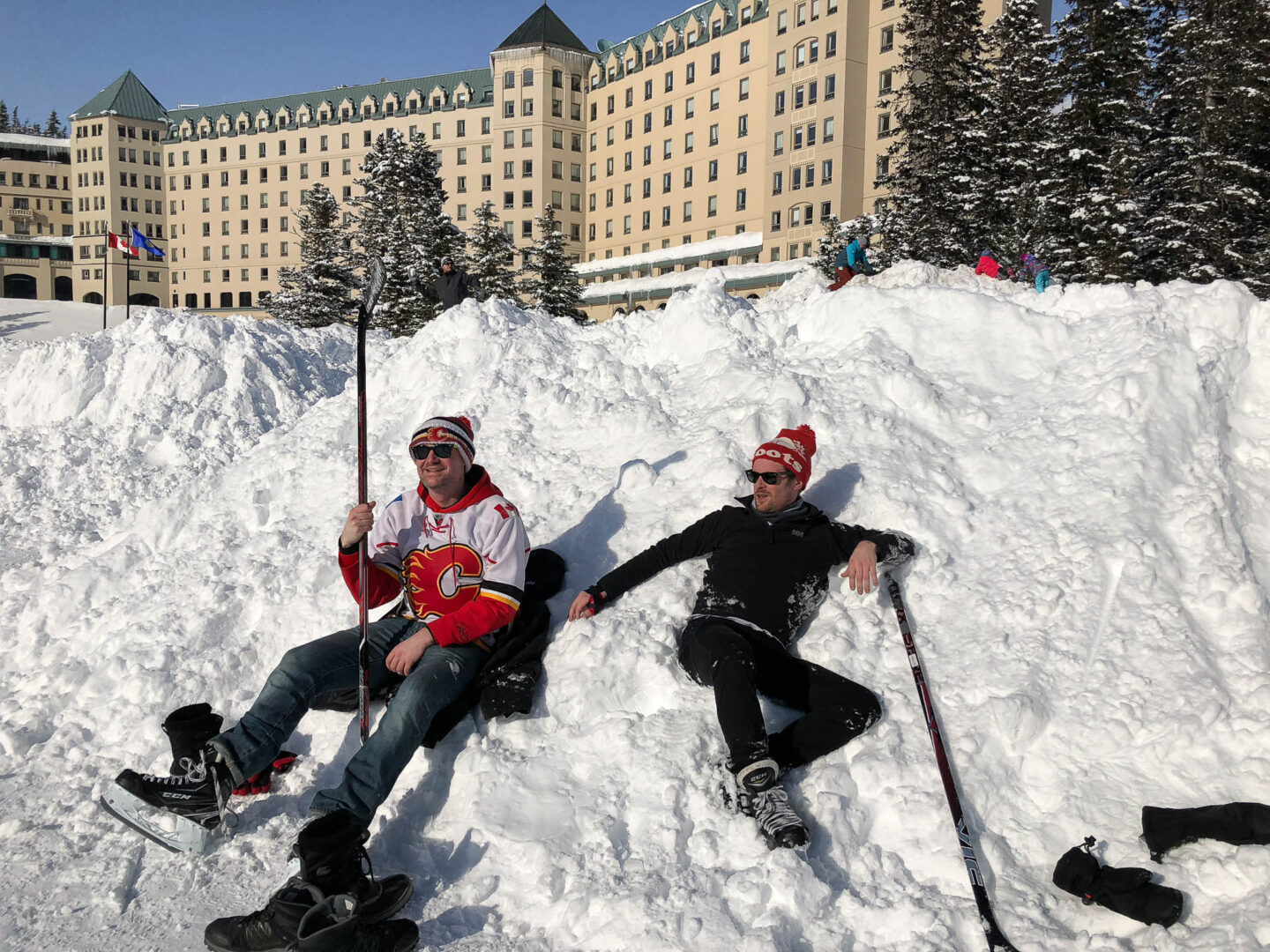
PACKING FOR BANFF: STAYING SAFE ON THE ICE
Is there snow / ice on the pavements and roads in Banff?
Snow and ice are a part of daily life in Banff National Park for many months of the year. So, it’s not surprising that Canadians mean business when it comes to deicing and clearing the road and pavements from snow. During our trip to Banff in March, one could walk around town in normal shoes as snow was piled up on the side of the street. In some cases it had even melted completely, depending on the day. Nevertheless, any time we ventured off the well trodden pavement or road, there was abundant snow. I imagine that in January and February, clearing out roads and pavements will be a constant battle!
Do people wear snow boots to have dinner in a nice restaurant?
During our Banff trip in March, we saw plenty of locals wearing normal, everyday shoes out and about in Banff town, especially on days when it was not actively snowing. This makes sense, as local residents would mostly take short walks between the indoors and their cars. Most travellers, however, had sturdy, weather appropriate shoes on.
Wondering if you can go have dinner in a nice restaurant in snow boots? The answer is, generally, yes. Not only is it sensible in snowy weather, but also quite appropriate. Most restaurants and bars in Banff town and the National Park have a lowkey and casual ambience, even the ones with carefully curated interiors and expensive menus. The only exception to this would be super high end hotels; most hotel guests change out of their snow gear before dinner.
BANFF WINTER PACKING ESSENTIAL No 4:
Snow boots / Winter hiking boots
Wearing shoes with traction and warmth when you are out and about all day in Banff is key, both around town and the great outdoors. My friends and I, we all had sturdy hiking or après ski boots on, for the whole duration of the trip. I’d definitely recommend adding a pair to your packing list.
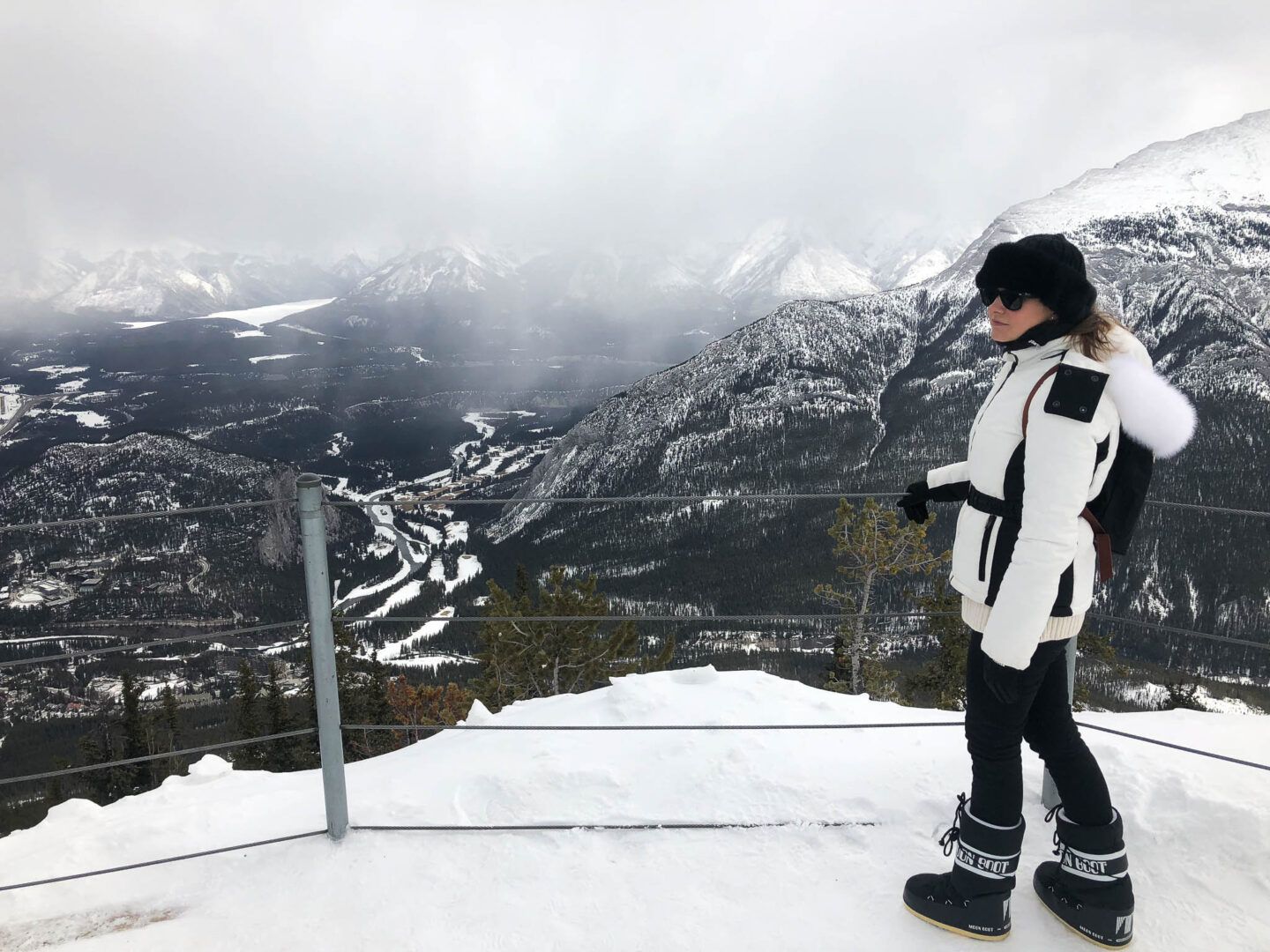
PACKING FOR BANFF: STAYING COSY & COMFORTABLE
Wishing to master the art of layering?
Mastering the art of layering is important in really cold weather, but also when there is significant temperature variation day to day or throughout the day. The key is to pack pieces that work well together, and by work, I mean fit. It is a thin line between layering and feeling like a stuffed turkey! Try on your clothes carefully and with a critical eye before putting them in your suitcase!
BANFF WINTER PACKING ESSENTIAL No 5:
Cosy mid-layers
Whether you prefer cashmere roll necks or fleece tops from recycled polyester, a variety of comfortable and stylish jumpers can take you from dogsledding in the woods to dinner at a cosy restaurant in Banff. Add to that a couple of long sleeve tops, a thermal or two and, of course, the quintessential Canadian flannel shirt and you have the perfect capsule wardrobe for your Canadian adventures.
In very cold weather, a thick jumper can be combined with a thin long sleeve top or a flannel shirt and even a thermal underneath for added warmth. When you are indoors, sitting by the fire, just take the jumper off. Similarly, a variety of temperatures and situations can be covered by a thin jumper or thick thermal top (I’d recommend merino wool in both cases) underneath a cosy flannel shirt. While this might not be your typical style, it is a staple for Canadian expeditions for a reason!
BANFF WINTER PACKING ESSENTIAL No 6:
Thermal tops & leggings
Thermal tops are perfect underneath loose or scratchy jumpers, thin tops or just anything that you wish to maintain fresh for longer. Also, a pair of thermal leggings is a must if your favourite pair of trousers are on the thinner side (did you see No. 2 on this list?) or you are expecting freezing temperatures! Wear them underneath your trousers during the day, on their own for a quick session at the hotel gym or as pyjama bottoms in case of inadequate room heating.
Whatever the use, and whatever your sex, I highly recommend visiting Uniqlo for stocking up on some affordable thermals that do the job. If you are willing to spend a bit more, any thermals made from natural and breathable materials such as merino wool and bamboo are almost always a good purchase.
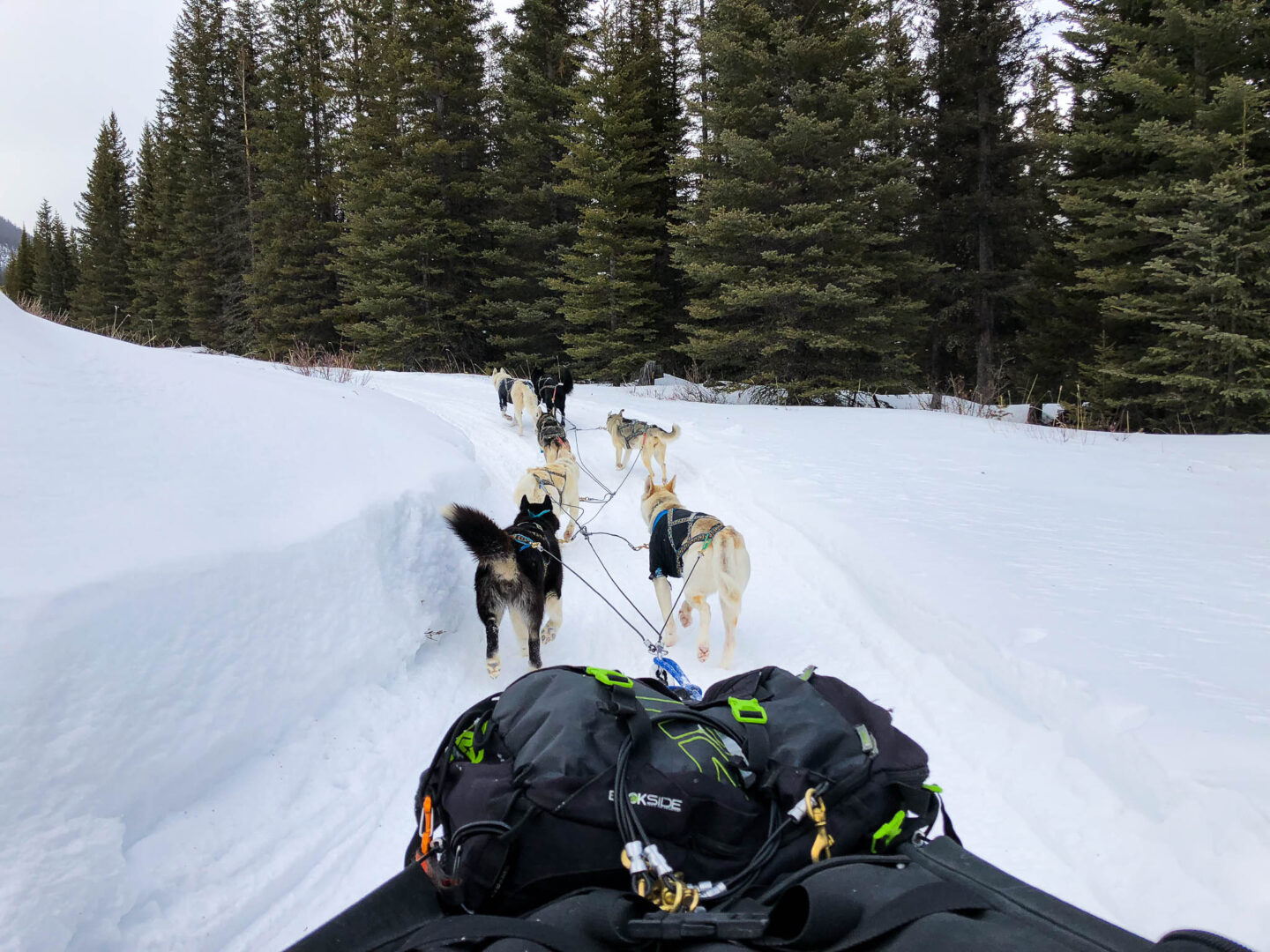
PACKING FOR BANFF: RELAXING AFTER A FULL DAY OF ADVENTURES
Should I bring a bathing suit?
Yes! There’s nothing better than ending a cold and snowy day in a hot tub! Thankfully, there’s plenty of opportunities for that in Banff. Whether you are visiting the Banff Hot Springs, having a spa day or just enjoying the hot tub and pool of your hotel, I guarantee that you will find a way to relax those muscles in some hot bubbly water!
BANFF WINTER PACKING ESSENTIAL No 7:
Swimsuit & flip flops
A bathing suit is a must for your Banff packing list year round, and don’t forget those flip flops!
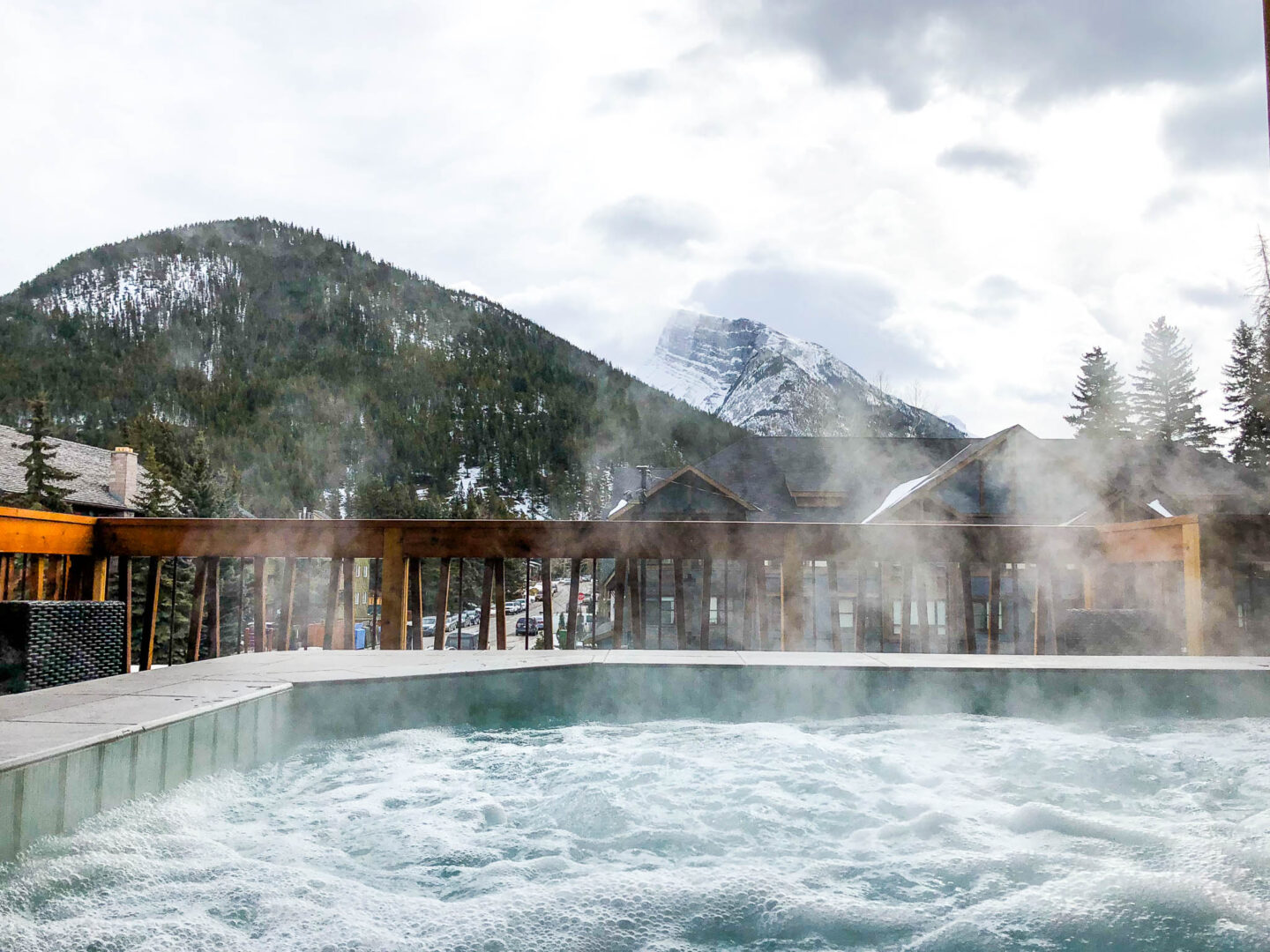
FINAL THOUGHTS
That’s all folks! I hope this was helpful and you are now ready for your snowy adventures in the winter wonderland that is Banff National Park. If you have any questions, don’t hesitate to ask in the comment section below. Make sure to check out the rest of my Canada travel guides for itineraries, highlights and more in the Canadian Rockies and beyond!
This is not a sponsored post & I am not affiliated with any of the hotels, restaurants or organisations mentioned.
A DEEP DIVE INTO CANADA
Looking for more Canada travel guides? Or maybe tips, inspiration and practical advice for effortless travel and authentic experiences? Hit the button below!
___
